When considering the installation of a Tesla charger at your home, understanding the costs involved is essential. The investment not only enhances the convenience of charging your vehicle but also integrates advanced technology into your daily routine.
The price of Tesla charger installation can vary based on several factors, including the type of charger, electrical upgrades needed, and labor costs.
A Tesla Wall Connector, for instance, may cost between $400 and $550 for the unit alone. The total cost is influenced by your specific home charging needs and the electrician’s rates.
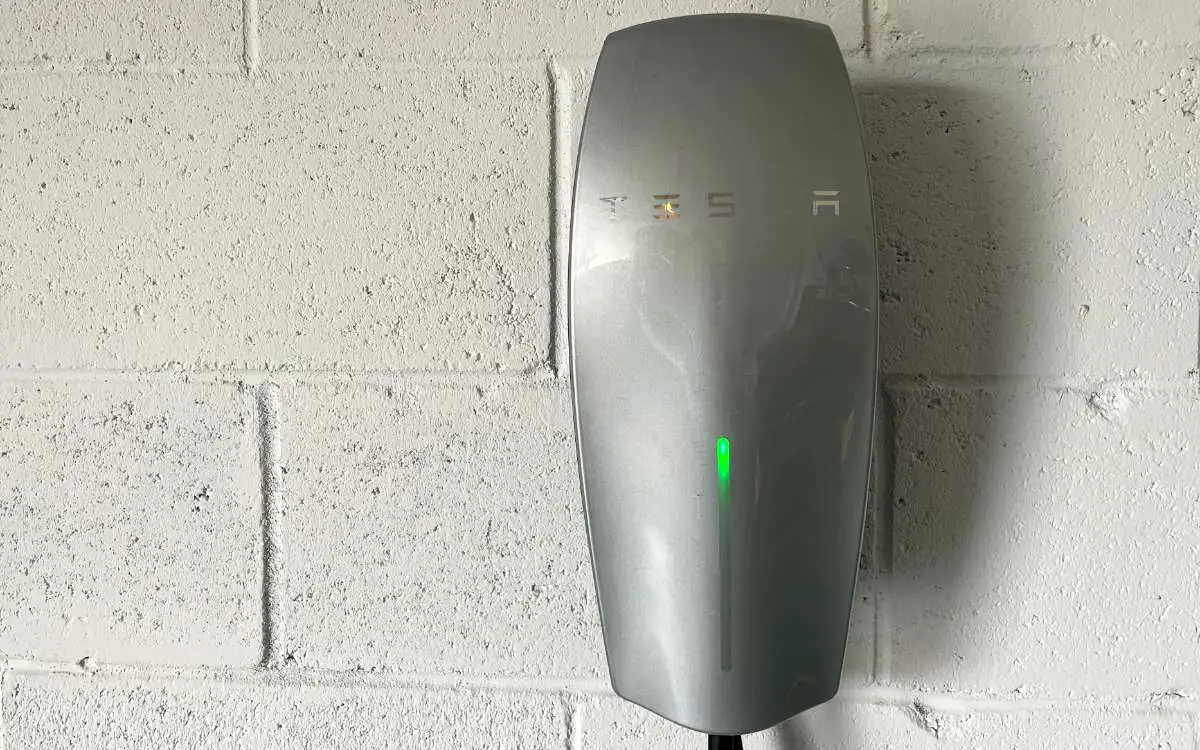
Before proceeding with the installation, you’ll need to determine which charger suits your vehicle and lifestyle, and ensure that your electrical system can accommodate the additional load.
Navigating the prerequisites and understanding the available financial rebates or incentives can also affect the overall affordability of the installation process.
Key Takeaways
- Evaluating the right type of charger corresponds to cost-efficient installation.
- Pre-installation assessment of home electrical capacity is crucial.
- Incorporating charging infrastructure at home includes potential financial incentives.
Understanding Tesla Charger Options
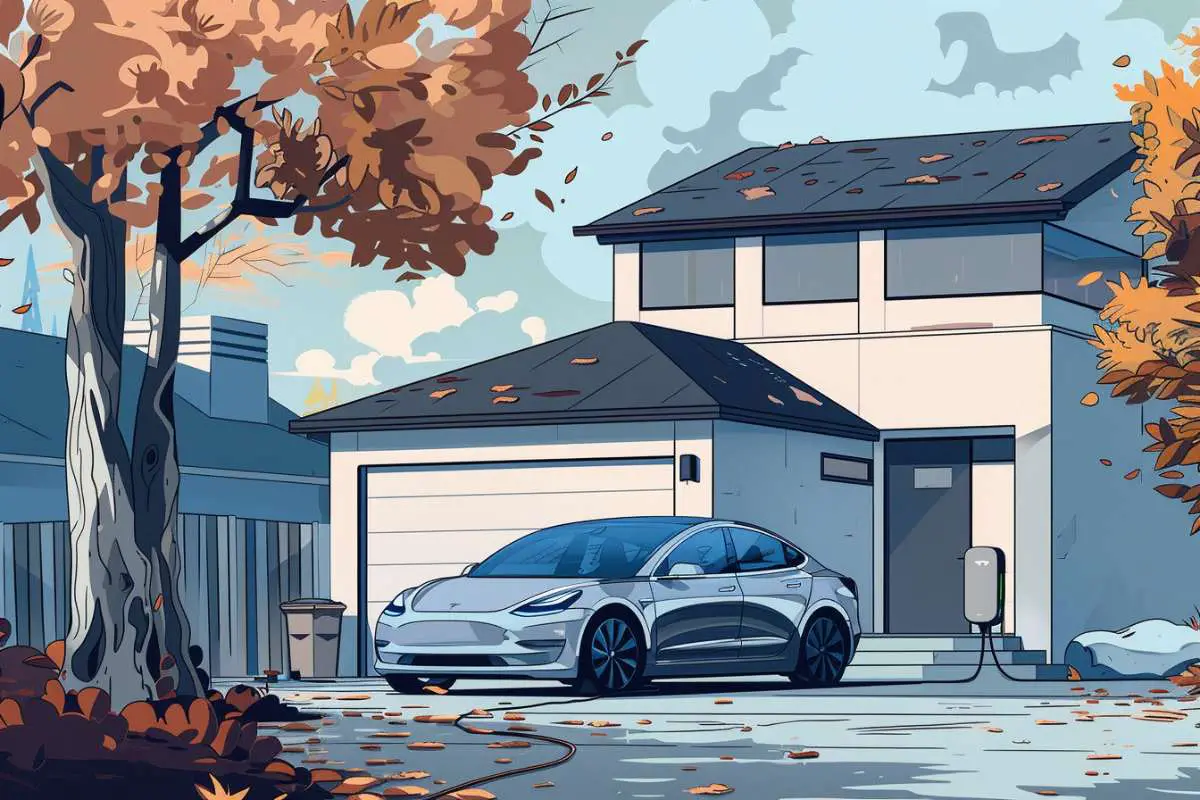
When selecting a Tesla charging solution, you must consider the types available and their charging speeds to ensure efficient and convenient home charging.
Types of Tesla Chargers
Tesla provides two primary types of charging options: the Tesla Wall Connector and the Tesla Mobile Connector. A Level 1 Charger, which is essentially a standard household outlet, can also be used but is less common due to its slower charging speed.
Tesla Wall Connector vs. Mobile Connector
The Tesla Wall Connector is a fixed Level 2 Charging Station installed into your home’s electrical system. It is capable of faster charging rates compared to the portable Tesla Mobile Connector, which can plug into various outlets and serves as a more flexible option.
Charging Speeds Compared
- Level 1 Chargers: Up to 3 miles of charge per hour
- Tesla Mobile Connector (using a standard household outlet): Up to 3 miles of charge per hour
- Tesla Mobile Connector (with a 240 V outlet): Up to 30 mph
- Tesla Wall Connector: The maximum charge rate can reach up to 44 miles of range per hour, depending on the model of your Tesla and your home electrical system’s capacity.
Installation Prerequisites
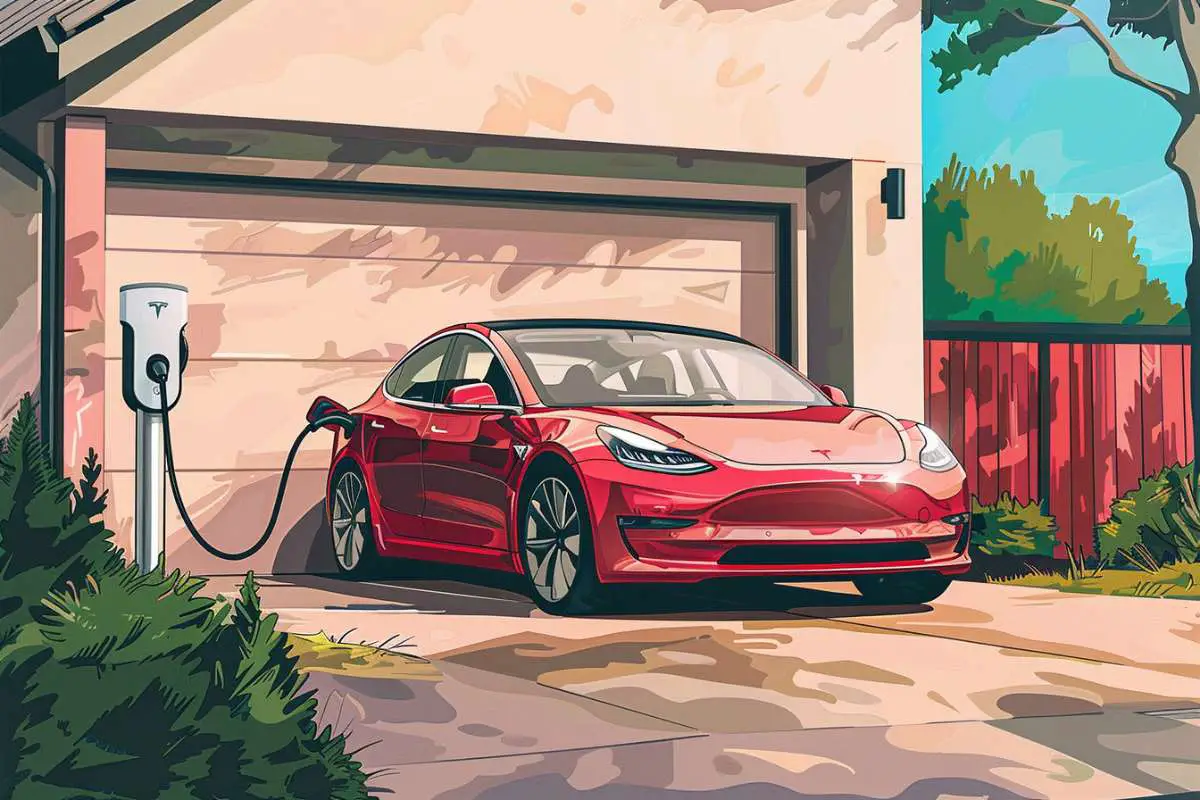
Before installing a Tesla charger, it’s crucial to assess your home’s electrical system and pinpoint the ideal outlet location for efficiency and safety.
Evaluating Home Electrical System
Your electrician will first examine your home’s electrical system to ensure it has the necessary power capacity to support a Tesla charger.
An upgrade to your electric panel may be needed if it’s not up to code or lacks sufficient power. An assessment will include checking your panel’s amperage and space for a new circuit breaker.
Determining Optimal Outlet Location
Choosing the right electricity outlet location is influenced by where your electric vehicle will be parked.
Wiring considerations and installation costs can change significantly with distance from the electrical panel. A 240-volt outlet typically ensures faster charging and needs to be conveniently placed to minimize the length of the charging cord required.
Cost Factors for Tesla Charger Installation
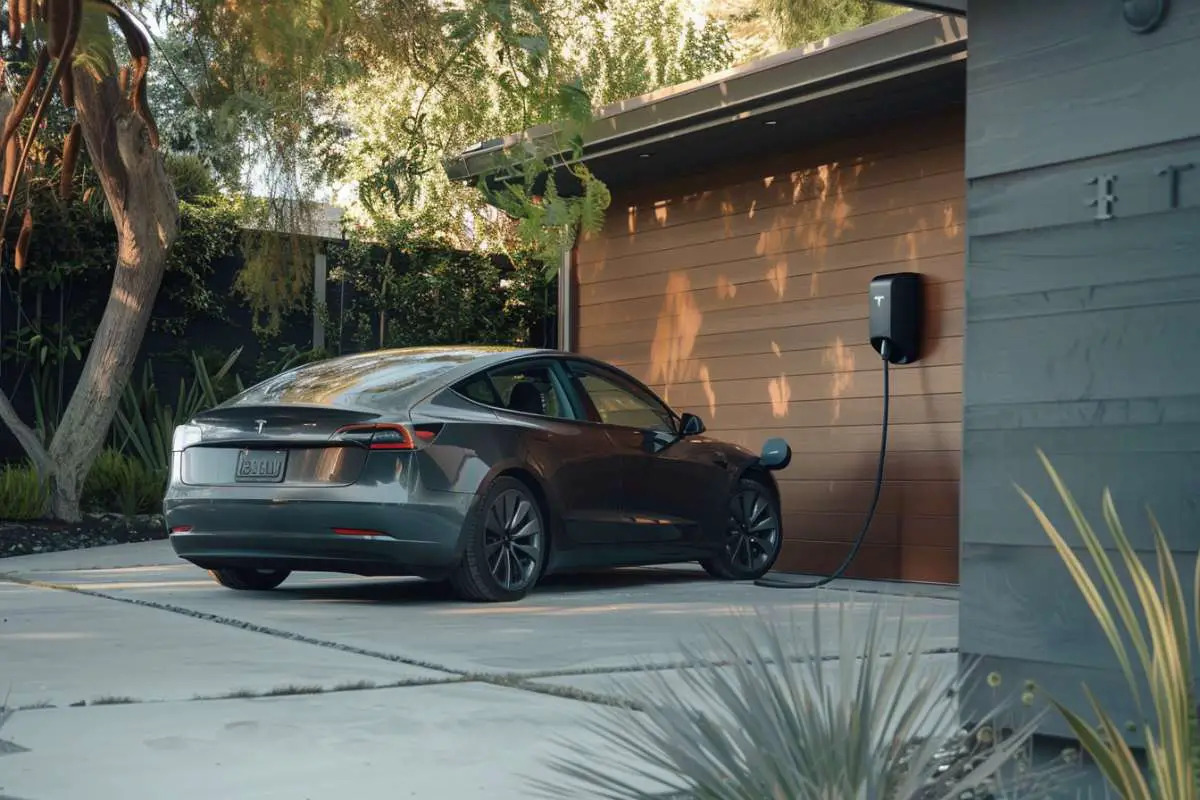
When considering a Tesla charger installation, you need to be aware of several cost factors, including hardware, labor, and regulatory compliance.
Charger and Installation Material Costs
The Tesla Wall Charger, also known as the Wall Connector, is a key hardware component with an average price of around $500.
Installation materials may include a variety of items such as wiring, conduit, and potentially a panel upgrade to support the increased electrical demand.
These materials can substantially vary, where a simple setup may only require basic wiring, but a complex installation might necessitate a full panel upgrade and extensive new wiring.
Labor Costs and Professional Installation
Labor costs for installing a Tesla charger can differ based on the location and the complexity of the installation.
A straightforward installation with easy access to existing electrical infrastructure might cost as little as $500 in labor, but more complex installations involving significant electrical upgrades can attract labor costs significantly higher, occasionally upwards of $6,500.
A professional installation is recommended to ensure safety and compliance with local electrical codes.
Permits, Regulations, and Code Compliance
Costs associated with permits and code compliance may also affect the total price of installation.
Local building codes and permits can differ greatly by region, with some areas requiring thorough inspection and documentation.
Typical permit-related expenses could range between $100 to $500, varying greatly depending on local authorities’ requirements.
Compliance with these regulations is essential for ensuring the safety and legality of your electric vehicle charging setup.
Enhancing Charging Convenience at Home
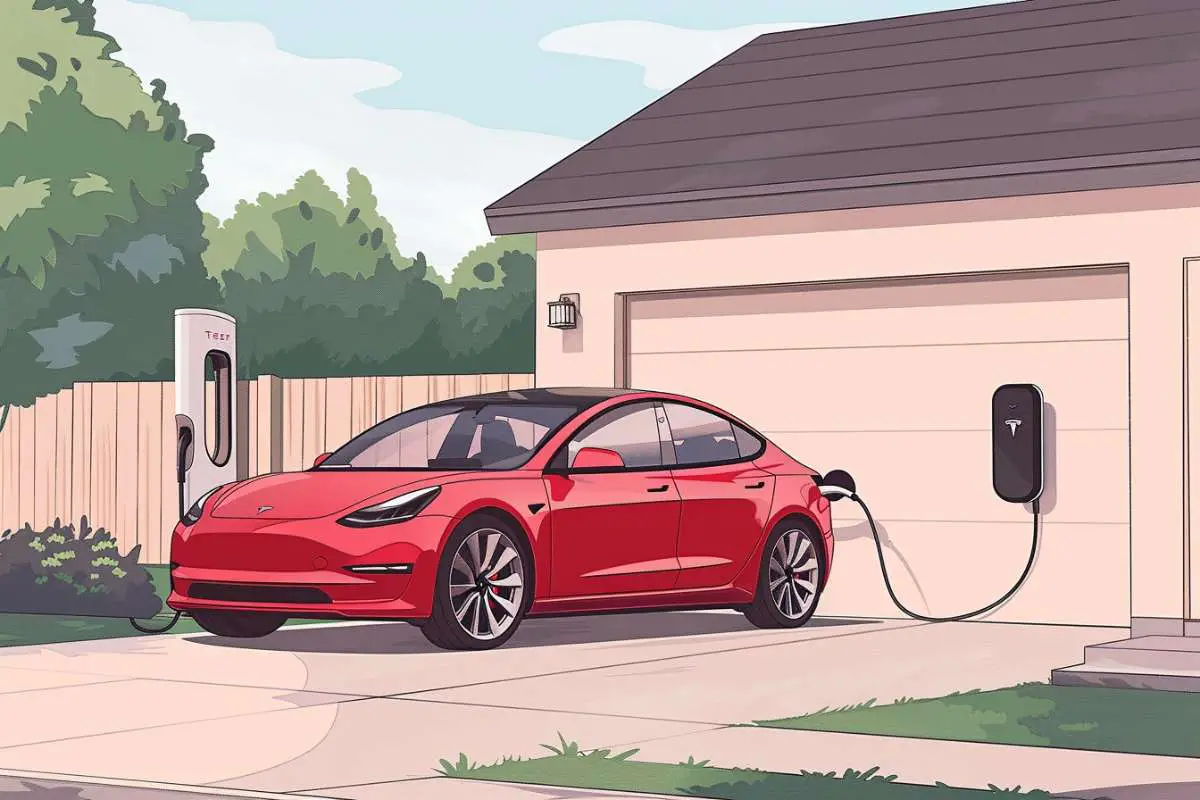
For Tesla owners, installing a home charger is a significant step towards ensuring your electric vehicle charging needs are met efficiently.
Home Charging Benefits
Convenience: With home charging, particularly through a Level 2 charger, you gain the freedom to charge your Tesla at your leisure, avoiding the need for frequent public charging station visits. A Level 2 charger can provide up to 44 miles of range per hour.
Charging Needs: Home charging is tailored to your unique schedule and needs. By charging overnight, for example, you ensure your vehicle is fully charged and ready to go each morning.
Selecting the Right Location for Convenience
- Accessibility: Choose a spot that allows you to easily connect and disconnect your Tesla, taking into account the length of the charging cable to avoid unnecessary strain.
- Proximity to Power Source: Ideally, install your charging station close to existing electrical infrastructure to minimize installation costs. If an approved outlet is already in place, installation may not be required.
Financial Considerations
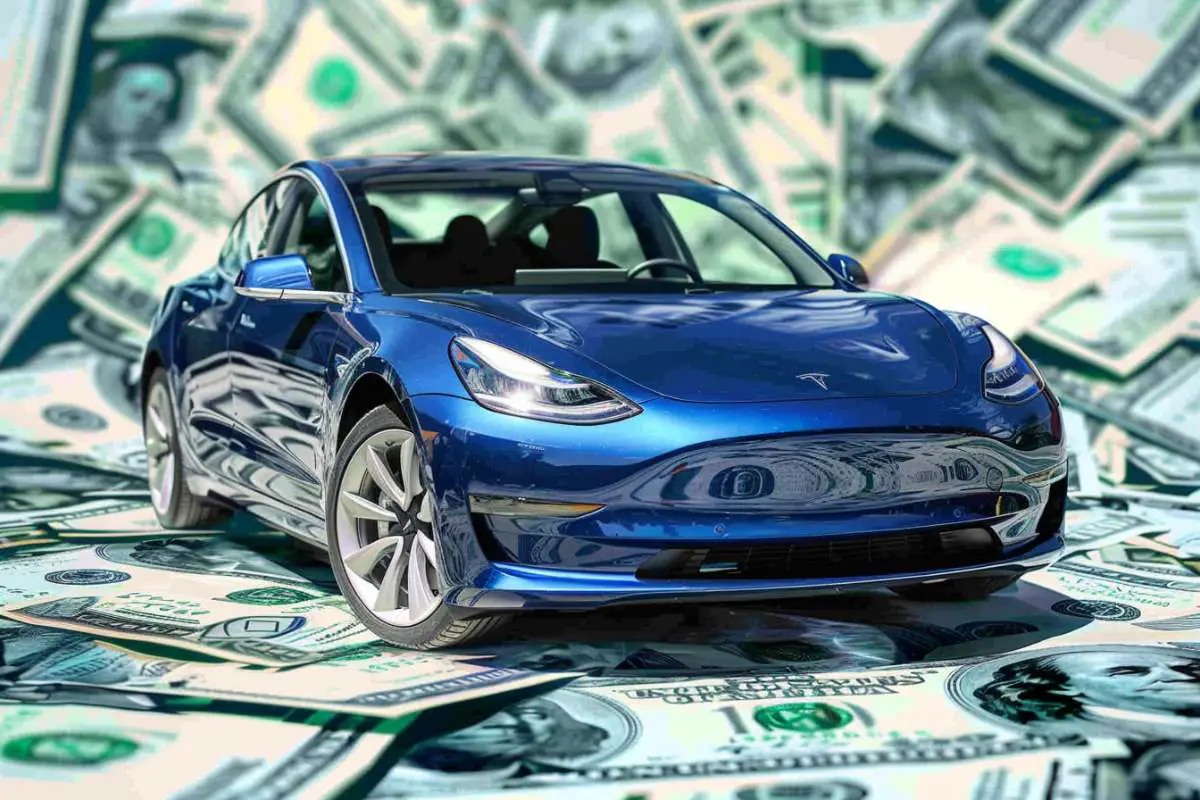
When considering the installation of a Tesla charger, it’s important to evaluate the long-term savings on energy, available rebates, and the cost differences compared to using public Superchargers.
Energy and Long-Term Cost Analysis
Installing a Tesla home charger may impact your electric bill, but the energy cost savings over time can be significant.
JuiceBox and ChargePoint are alternatives that also offer cost-effective charging solutions.
By shifting charging to off-peak hours, you can benefit from lower rates offered by utility companies.
Rebates and Incentives
Utility companies and various governments offer rebates and incentives for home charger installations which can significantly offset the Tesla charger installation cost.
To maximize the cost savings, stay informed about the latest programs from your local and federal agencies.
Comparing Cost to Public Supercharger Use
Relying solely on public Superchargers may seem convenient, but the cost per kWh is generally higher compared to home charging stations.
By charging at home, you’re avoiding these higher rates and enhancing your vehicle’s availability for use.
Tesla Charger Installation Process and Timing
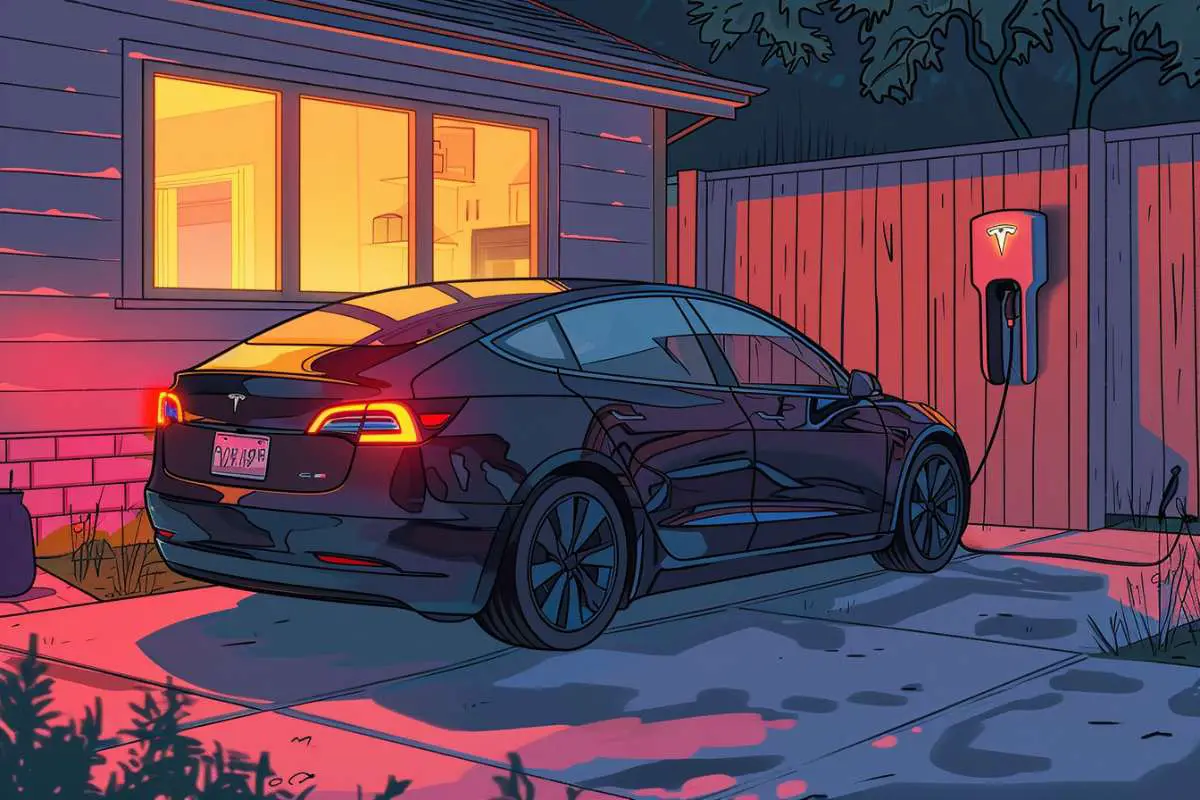
Installing a Tesla charger involves careful consideration regarding whether to attempt a DIY installation or hire a professional, as well as understanding the timeline of the process from start to finish.
DIY Installation vs. Hiring a Professional
DIY Installation: If you have a solid background in electrical work, you may consider installing a Tesla home charging station yourself.
Keep in mind that you’ll need to ensure local codes and permits are respected, and while you might save on labor costs, safety should be your top priority.
- Assess your electrical system’s capacity.
- Determine appropriate tools and Tesla-specific installation requirements.
- Obtain necessary permits from local authorities.
Hiring a Professional: Most EV drivers choose professional installation for safety and compliance.
- A certified electrician can install your Tesla charger, handling all aspects including the evaluation of your electrical system, securing permits, and ensuring the installation meets code requirements.
- Professionals provide expertise and guaranteeing quality of work.
- They manage the entire process, including inspection and testing post-installation.
Timeline of Installation from Planning to Completion
Planning:
- Evaluation of your existing electrical system (1-2 days).
- Selection of your Tesla charger model and purchase (1 day).
Preparation:
- Scheduling a professional installer or prepping for DIY (1-3 days).
- Acquiring necessary permits (varies by location, expect 1 week to 2 months).
Installation:
- Actual installation of the Tesla charger by a professional takes about 4-8 hours.
- If doing it yourself, allow at least a full day to account for learning curve and setup.
Post-Installation:
- Inspection, if required, could be scheduled within 1-2 weeks post-installation.
- Final setup and testing are usually completed on the same day as installation.
Technology Integration and Future-Proofing

When installing a Tesla home charger, considering both present needs and future advancements ensures your investment is not just a short-term solution but a long-term asset.
Wi-Fi Connectivity and Smart Charging Features
Tesla chargers come equipped with Wi-Fi connectivity, allowing for over-the-air firmware updates and smart charging features.
With these capabilities, your charger can automatically adjust the charging rate to optimal times for cost and energy savings.
In particular, Tesla’s chargers can be managed and monitored via a smartphone, making the charging process not only efficient but also user-friendly and adaptable to your lifestyle.
Upgrading for Future Electric Vehicles
The electric vehicle market is rapidly evolving, and the chargers you install today need to cater to tomorrow’s EVs too.
Consider options that offer not just the necessary power for current Tesla models, but also the adaptability to accommodate future electric vehicles that may have different power requirements.
Upgrading to a charger with a higher amperage, for example, ensures you are prepared for the next generation of EVs that may require more power to charge efficiently.
- Tesla Charger Installation Cost (Home Setups) - March 1, 2024
- Tesla Phone Key Disconnected (Troubleshooting Guide and Quick Fixes) - March 1, 2024
- Tesla FSD 12 (Explained) - March 1, 2024